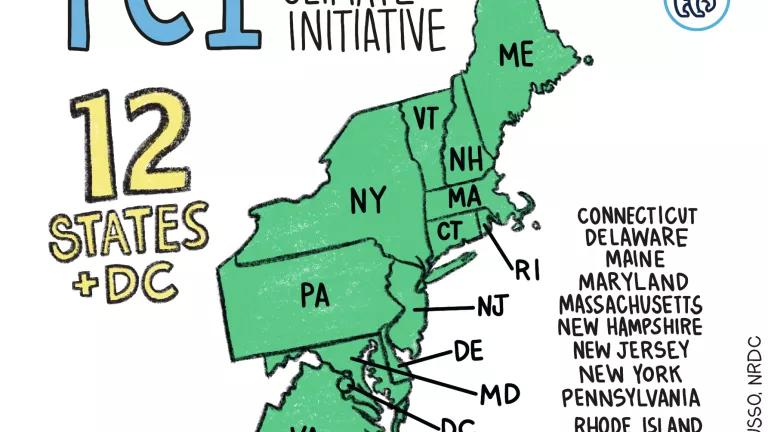Clean Power Plan Substitute Blind to MI Clean Energy Success

The Environmental Protection Agency has proposed repealing the Clean Power Plan, the nation's first limits on the nearly two billion tons of climate-changing carbon pollution coming from power plants each year, and replacing it with a thinly-veiled bailout for the coal industry that would actually be worse than doing nothing. If finalized, this rule would increase dangerous air pollution from coal-fired power plants, harming public health and stymieing efforts at the state and local levels to move toward clean energy and combat climate change.
I joined a deep bench of colleagues on October 1 in Chicago to testify against this proposal, at the only public hearing EPA has scheduled in the entire country. Scores of scientists, consumer and environmental advocates, public health experts, elected officials (including US Senator Tammy Duckworth, and Washington Governor Jay Inslee in person!), and concerned citizens, including a girl scout troop, demanded that US EPA do better and strengthen our climate and health protections—not weaken them.
My Testimony:
Hello my name is Ariana Gonzalez, I’m an energy policy analyst with the Natural Resources Defense Council managing our energy work in Michigan. I will be speaking for our nearly 14,000 members and 75,000 activists in Michigan who couldn’t make it to Chicago today, but want to express their opposition to the Clean Power Plan replacement.
For the past five years, I’ve been working on energy issues in Michigan and have seen the state begin to reap the health, economic, and climate benefits from moving to a cleaner power sector.
From 2005 to 2015, Michigan has reduced its total carbon dioxide emissions by approximately 15 percent. Michigan’s wind and solar power plants averted about 7.3 million metric tons of carbon dioxide emissions. These renewable power plants also averted more than 18,000 metric tons of sulfur dioxide and about 7,600 metric tons of nitrogen oxides. This is a strong start, but more work needs to be done. The more energy needs that can be met with renewables and energy efficiency, the less energy we need powered by dirty fossil fuels that pollute our air and lungs.
Back in 2015, I sat down with utility executives in Jackson, Michigan and Detroit, Michigan when the Clean Power Plan came out. Many utilities’ knee-jerk reactions were to fret or worry, but when they got down to the modeling they saw what was readily accessible: meeting and even exceeding the plan affordably and reliably. Fast forward a few years and those same utilities, the two biggest utilities in Michigan, made announcements to reduce carbon emissions by 80% by 2040 and 2050 respectively. I believe the Clean Power Plan prompted the exploration and modeling that showed the utilities that this was possible.
The following year, I paced the halls of the state capital with partners at 5am as energy legislation that would increase the renewable portfolio standard and incentivize more energy efficiency was being finalized. After years of back and forth, ultimately it was bipartisan compromise that secured this bill. We all agreed the details could be compromised, but the pursuit of clean energy could not.
Thanks to the 2008 legislation which created the clean energy standards, and the 2016 legislation that carried those standards further, the Michigan clean energy industry and economy has flourished. Michigan leads the Midwest with over 122,000 clean energy jobs this year. For comparison, fossil fuels employ 13,000 people in Michigan. A large ratio of veterans are also entering the field, making up 11% of the state’s clean energy workers. These jobs vary from manufacturing jobs, administrative jobs, installation jobs, and management jobs, and more.
In addition to be an important employer, the clean energy industry has also been saving Michigan families’ money on their utility bills. The cumulative effect of the efficiency programs run between 2009 and 2016 was a net electric bill savings of $3.3 billion and with the even more aggressive programs planned going forward the state is poised to produce an additional $3 billion dollars in electric bill savings for families across Michigan by 2021.
The picture I'm painting is one that has benefited from clean energy standards and goals.
Michigan is going all in on clean energy because it makes sense on so many fronts. Customers’ pocketbooks, our health, our environment, our electric grid, even the utilities’ bottom line. The proposed Clean Power Plan replacement will do nothing to spur innovation or drive these many benefits we've already seen. Michigan will continue to forge ahead in our transformation of the electric grid. But what would aid that transformation is a federal plan that strengthens the established Clean Power Plan, rather than tearing it down.
Thank you.



